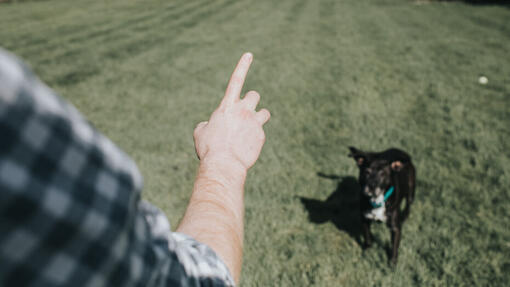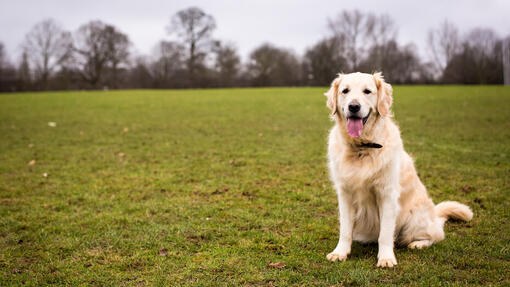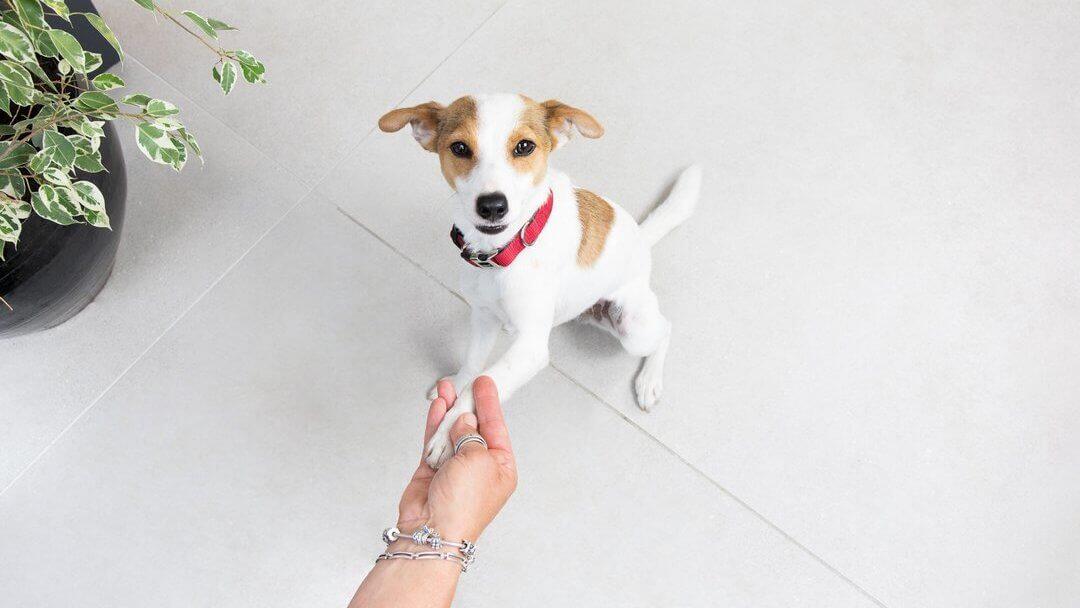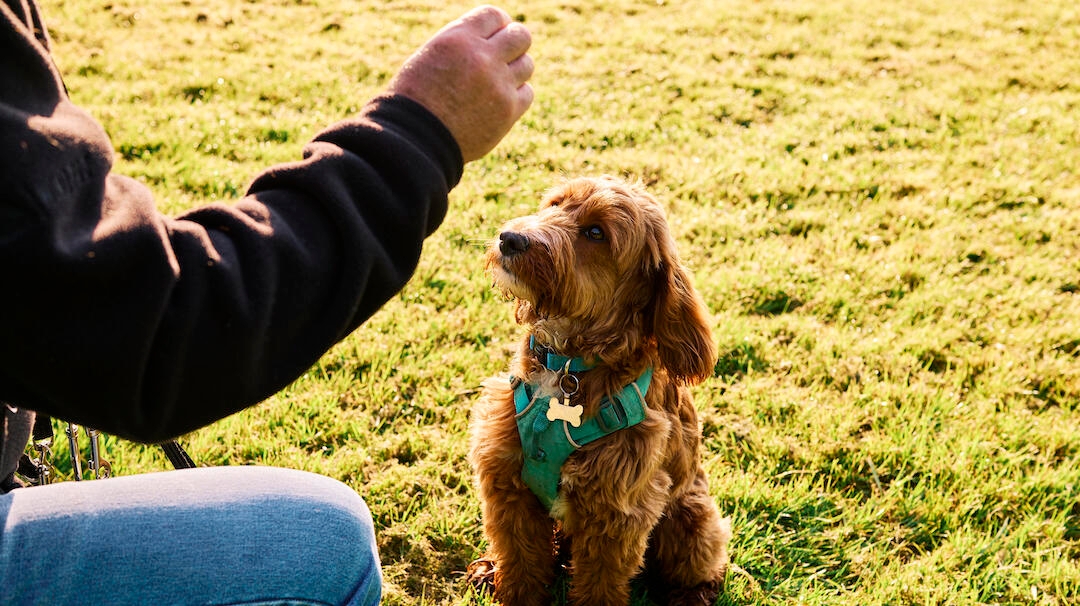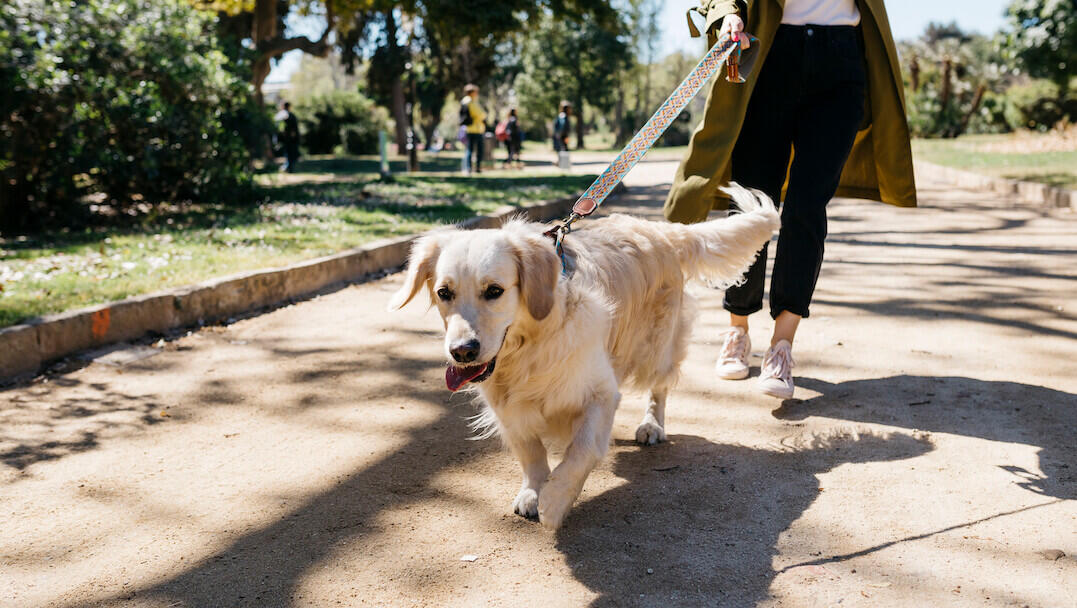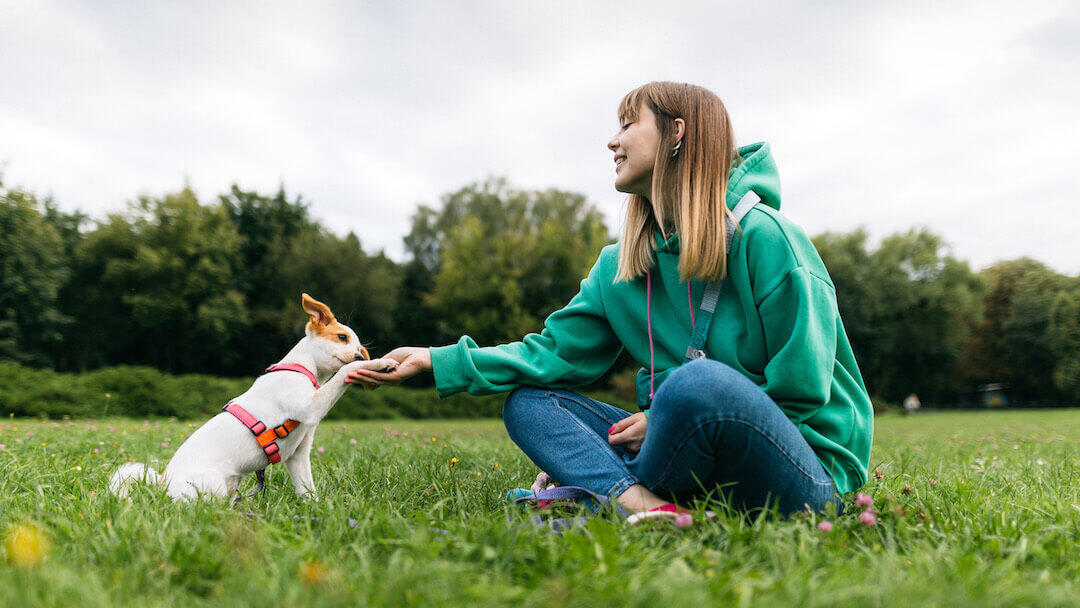
One of the first things most people think about teaching their puppy or dog to do is to sit when they are asked.
This is an easy first training exercise for owners to teach and for most dogs to learn, and it is one that has plenty of real life uses.
Why should you teach your dog to sit?
Learning to sit when asked is a great first step in canine manners and can start to be taught as soon as your puppy comes home.
First of all, it gives you a simple thing to ask your dog to do that is incompatible with less desirable behaviours, such as jumping up, trying to steal food or leaping into the road. This means you can ask your dog to do something that you can reward in certain situations rather than them doing something you would rather they didn’t or that could be dangerous.
For people who are worried about dogs, seeing a dog sitting politely makes them seem far less scary, and stopping to have a conversation with someone is a lot easier if your dog will sit quietly beside you.
It is also the basis for a lot of other training exercises and dog sports too.
What Equipment is Needed to Teach a Dog To Sit?
To start this exercise, nothing is needed except:
- Some small dog treats that your dog loves (ideally smelly)
- A quiet place to train that doesn’t have a slippery floor (carpet or a secure rug is perfect – as is grass).
Step by Step guide to Training Your Puppy to Sit
- Start by showing the dog exactly what you want them to do by luring them with a treat.
- Hold a treat in your hand close to the end of your dog’s nose so they can smell it (if you have a small dog, you might need to sit on the floor or on a chair so you are not looming over them, which can be intimidating).
- Once they know it’s there and are keen to get it, lift your hand up and back slightly
- When their head comes up, their bottom will go down. You might have to change your position a few times to find out what works best for you.
- The instant their bottom touches the ground, use your marker work (or clicker if you are using one) and give the treat.
- Repeat this a lot until the moment you lift your hand up, your dog sits every time. Some dogs can learn this in a few repetitions; others will take a few days. At this point you can add the cue word (“sit”) but use this as your dog is sitting and not before. To start with all you are aiming to do is link the word with the action.
- From here, you can stop luring (after having practised a few so your dog knows what it is you are wanting). Take the treat, make sure your dog knows it is there, and wait while they work out what you want.
- As soon as they put their bottom on the ground, use your marker and give the treat.
- Practise – adding the cue word every time your dog sits. Before long, you will be able to use the cue word to ask for the sit.
- Now it’s time to generalise the behaviour – in other words, do it in lots of different places and times. This can be different rooms, the garden and out on walks (first only when it’s quiet and then with light distractions). With each new location, start at the beginning and work through all the steps – although it should only take a few repetitions.
Next steps
Now it is all about practice.
You can find other ways to reward your dog for sitting too. Ask them to sit while you put their dinner down. Or ask them to sit before you throw a toy when out on walks.
Once your dog is doing this reliably, you can begin to reduce how often you reward them – but every now and then, revisit the sit in your training practice and sometimes give unexpected rewards to keep the behaviour refreshed and reinforced.
The 'Sit': When to Use It (and When Not To)
Some dogs struggle to sit as they find it uncomfortable or even painful – this includes Greyhounds and some other long backed dogs. For them, a better first exercise is the down (lying down on cue).
Older dogs who are stiff in their hips can find sitting uncomfortable too so it is best avoided.
Don’t ask dogs to sit on slippery floors, as holding the position without sliding can put stress on muscles and joints.
Problem Solving
If your dog is jumping up to get the treat or backing up, it is usually because you are moving your hand too high and too quickly.
If your dog finds this difficult at first and keeps back up, try teaching this with something behind them like a sofa.
Use the sit carefully – especially to start with – when out and about. Don’t use it to make your dog endure something they find stressful (like having strangers fuss them or in situations where they are highly aroused). It is far better to recognise these situations and remove your dog from them before they can become worried or stressed.
'Sit' Achieved: Your Next Training Step
Well done. In a few easy steps, you have taught your dog one of the earliest and most useful behaviour exercises – to sit when you ask them. You are well on the way to having a well-trained, polite dog.
Next take a look at how to teach your dog to lie down on cue.
FAQ
Dogs can be taught to sit at any age as long as it isn’t uncomfortable or painful for them to do so.
The sit is a good first exercise and the starting point for good canine manners and for teaching other exercises



